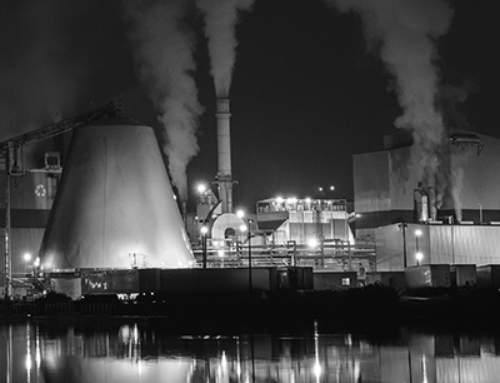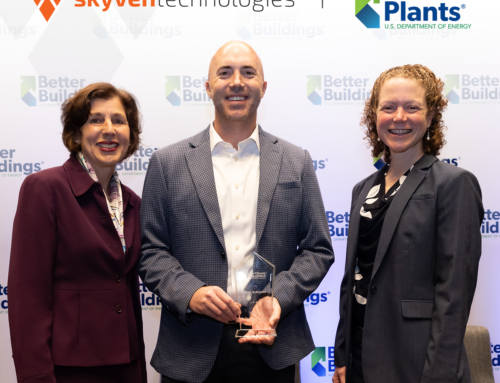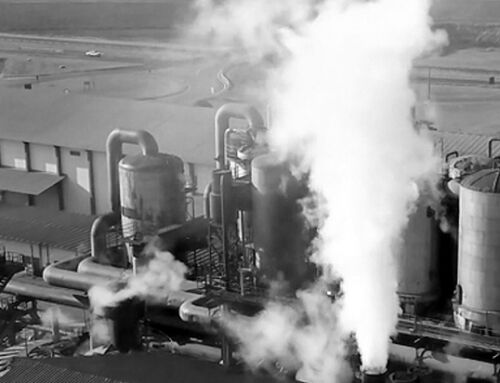The United States is the second-largest paper producer and consumer in the world. There are approximately 325 pulp and paper facilities in the United States, which emitted a total of 34.9 million metric tons of CO2 in 2021. Skyven’s work with paper manufacturers shows that 80-90% of natural gas consumption at paper mills is used for steam production, which is typically utilized by paper machines to remove water from paper products.
Paper machines generate humid, low-temperature exhaust, which is typically released to the atmosphere as a byproduct of the process. Decarbonization technologies can harness this low-temperature heat to improve process efficiency and reduce natural gas consumption at industrial facilities.
The following considerations are crucial when using paper machine exhaust as a heat source.
Heat source conditions:
- Heat from processes: In a paper machine, steam is used to drive evaporation of water as the sheet of paper passes over heated drums, generating hot and humid exhaust. In addition to this steam going to the paper machine, supplemental natural gas heat may be used directly for the paper drying process. Depending on the exhaust arrangement, the heat from this additional point of thermal energy use may be accessible in the paper machine exhaust stack.
- Total heat available: The sum of all available heat sources represents the total heat available for heat recovery.
Exhaust configurations:
- Paper machine design: Paper machine exhaust collection may have a variety of layouts and configurations. For example, depending on age, paper machines can range from having no exhaust hoods at all to being completely enclosed. Understanding your paper machine exhaust configuration is necessary when determining the optimal design and setup for technology installation.
- Variations in exhaust: Differences in paper machine configuration may lead to variations in exhaust temperature, moisture content, and concentration, all of which can affect heat recovery performance and efficiency. Paper machine exhaust temperatures can be up to 180 °F, with varying water content depending on system parameters.
Tie-in considerations:
- Exhaust stream characterization: The characterization of the exhaust stream must be carried out before selection and installation of equipment like heat exchangers and piping. These streams may contain corrosive vapors like chlorine or particulate matter, which can cause damage to equipment. Note that the equipment and procedure specifications will closely mirror those of existing exhaust heat recovery heat exchangers at the facility, which can also be used to inform equipment tie-in.
- System design and specifications: The exhaust stream temperature is affected by facility-specific conditions, including exhaust duct and fan specifications. Differences in these conditions may change the arrangement of tie-in components like ductwork and damper arrangements, which are used to control heat exchanger bypass. This will also affect induction fan sizing, if needed to transfer heat from the exhaust stack to the heat exchanger.
Decarbonizing with Skyven
To date, Skyven has worked with manufacturers at nearly 20 pulp and paper facilities to identify opportunities for clean process heat. Technologies like Skyven Arcturus, a mechanical vapor recompression (MVR) steam-generating heat pump (SGHP), reduce natural gas consumption by decreasing the use of natural gas-fired boilers currently used to produce steam. Arcturus captures low-temperature heat from paper machine exhaust, increases the temperature of that heat, and uses it to produce boiler-quality steam with zero Scope 1 emissions.
If you are ready to decarbonize your pulp and paper facility or want to learn more about decarbonization options, we’d love to have a conversation.
Skyven is an Energy-as-a-Service provider that delivers clean process heat to industrial facilities at prices lower than natural gas. We do this by identifying, funding, and building decarbonization solutions at your facility, then maintaining them for the life of our contract – with no capital cost to you.
Learn more about the Skyven process here, or reach out to sales@skyven.co to get in touch.





